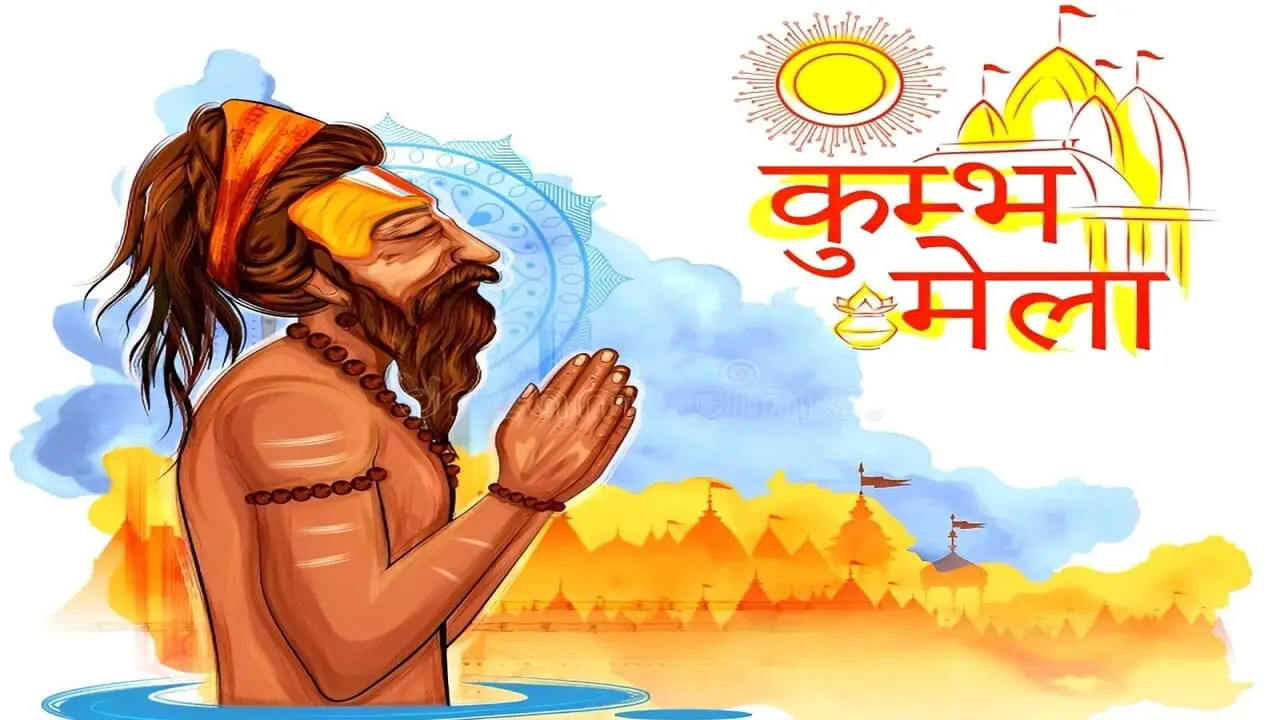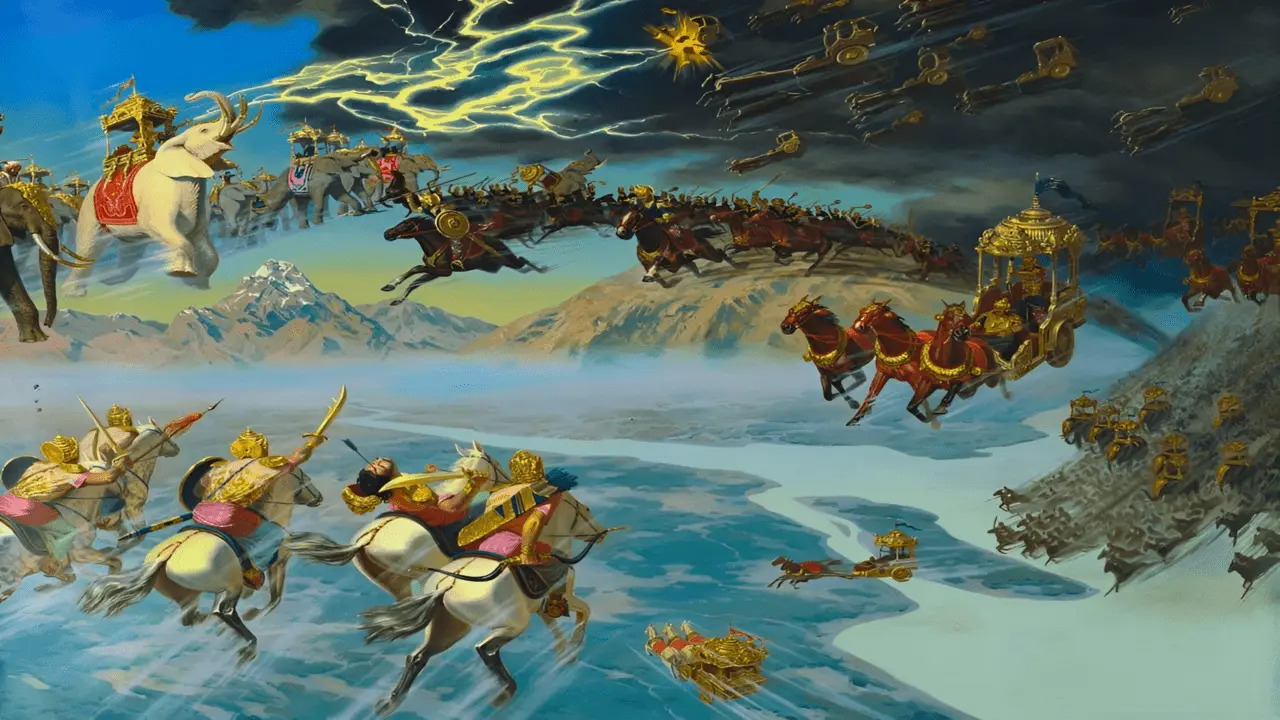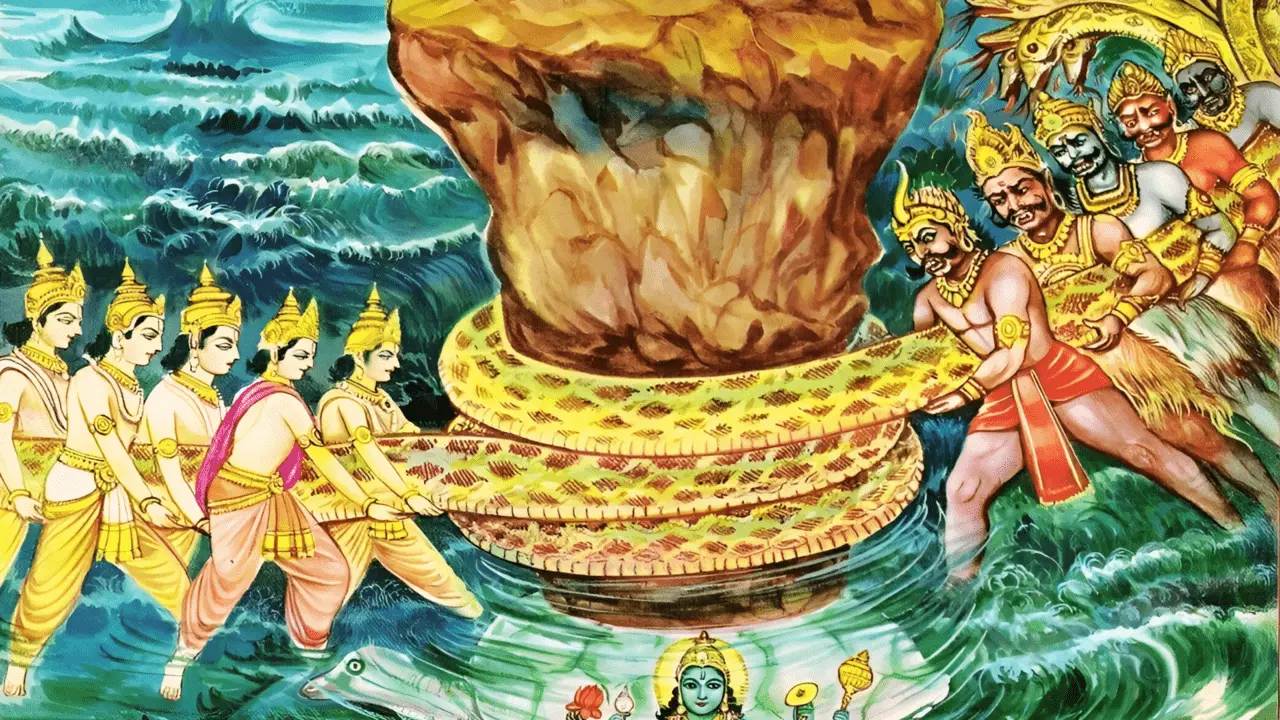
Kumbh Mela : Ardh, Purna And Maha Kumbh
The Origins of Kumbh Mela
The origins of Kumbh Mela lie in the age-old legend of Samudra Manthan (the churning of the ocean). According to Hindu scriptures, the Devas (gods) and Asuras (demons) churned the ocean to obtain the nectar of immortality, known as Amrita. During this celestial struggle, a pot (Kumbh) containing the nectar spilled drops at four places on Earth: Prayagraj, Haridwar, Ujjain, and Nashik. These locations became sacred, and the tradition of Kumbh Mela was born. Bathing in the holy rivers during this time is believed to cleanse one’s soul and pave the way to moksha (liberation).
Tracing the Roots of Kumbh Mela
Kumbh Mela has a history that dates back thousands of years. References to sacred river bathing can be found in ancient Hindu scriptures like the Vedas and Puranas. The tradition gained prominence under the spiritual guidance of Adi Shankaracharya, who revived and popularized Hindu pilgrimages. Over time, Kumbh Mela became a monumental celebration of faith, drawing not only saints and devotees but also travelers and seekers from across the globe.
The Astrological Significance
The timing of Kumbh Mela is deeply connected to celestial alignments. The positions of the Sun, Moon and Jupiter determine the event’s occurrence, signifying auspicious moments for spiritual purification and divine blessings.
The alignment of celestial bodies during Kumbh Mela has been studied for its influence on human consciousness and the environment. Such alignments are believed to create an optimal period for meditation and spiritual practices.
Sacred Cities That Host Kumbh
Kumbh is held at four sacred locations in India, each with its unique spiritual significance.
1. Prayagraj, Uttar Pradesh
Known as the Triveni Sangam, it is the confluence of the Ganga, Yamuna and the invisible Saraswati rivers.
2. Haridwar, Uttarakhand
Situated on the banks of the Ganga, it is a gateway to the divine.
3. Ujjain, Madhya Pradesh
Located along the Kshipra River, this city is deeply associated with Lord Shiva.
4. Nashik, Maharashtra
Nestled near the Godavari River, it is revered as a place of immense spiritual energy.
Different Types of Kumbh Mela
1. Ardh Kumbh Mela
Organized every 6 years, only in Prayagraj and Haridwar. This marks the halfway point in Jupiter’s 12-year orbit.
2. Purna Kumbh Mela
Held every 12 years at each of the four locations. This cycle corresponds to the time Jupiter takes to complete one revolution around the Sun.
3. Maha Kumbh Mela
Occurs once every 144 years only in Prayagraj, making it a once-in-a-lifetime event. This event is celebrated after 12 complete cycles of Jupiter.
The Spiritual Experience
Participating in Kumbh is a transformative journey. The event brings together a unique blend of ancient rituals, devotional practices, and cultural vibrancy. The sacred baths, spiritual discourses, and a chance to meet saints and sages make it an unparalleled experience.
Conclusion
Kumbh isn’t just an event but it’s a journey into the soul of India’s spiritual heritage. The festival’s grandeur, coupled with its deep-rooted traditions, makes it a must-visit for anyone looking to understand the essence of devotion and unity. Join this divine gathering and immerse yourself in its timeless magic.



